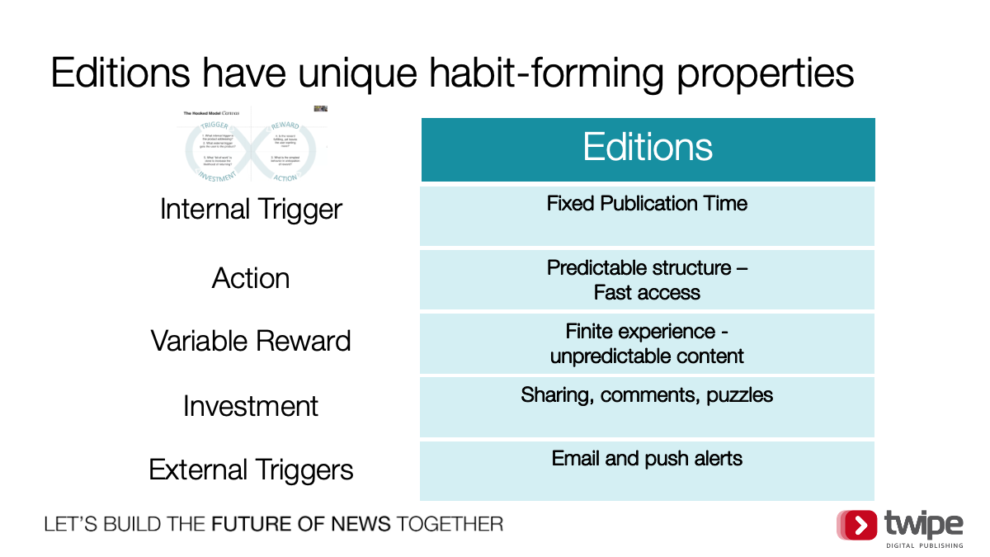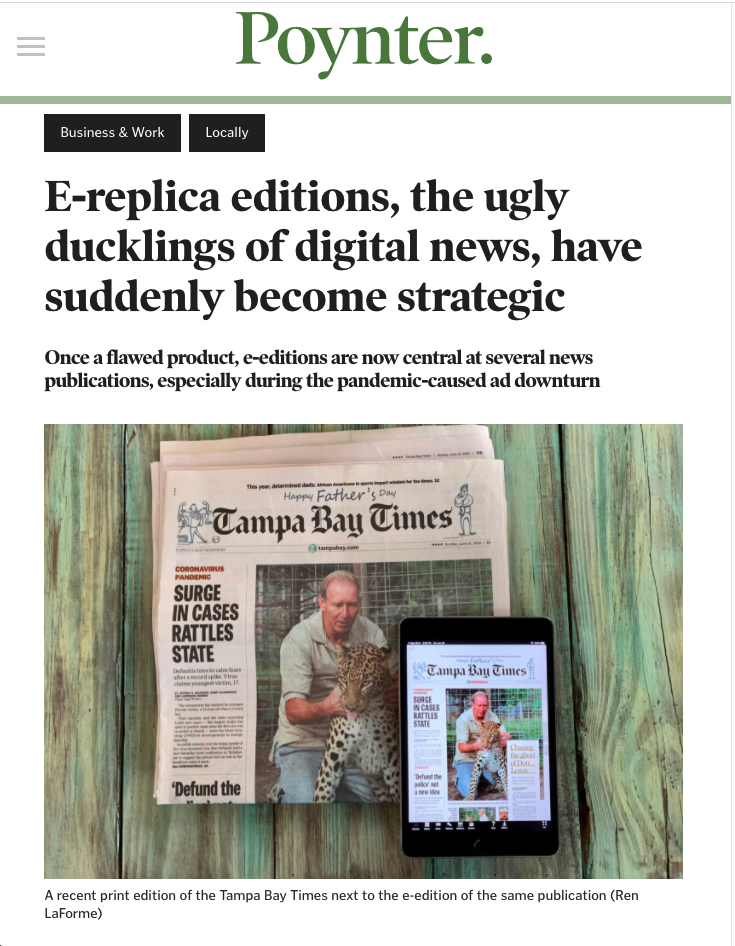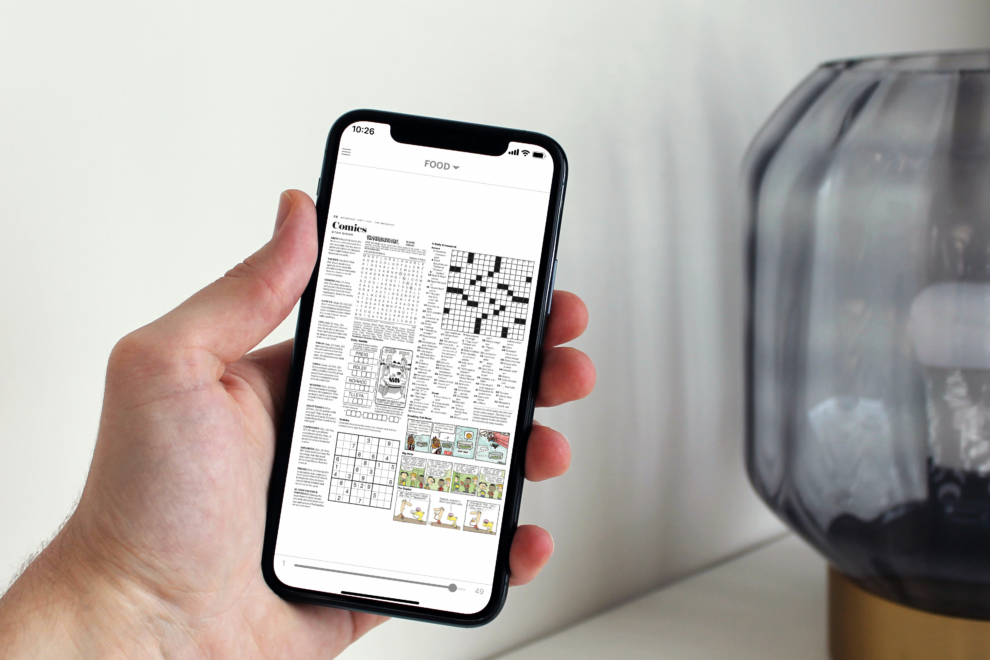Blog
3 learnings from talking editions with Poynter and AJC
This week, we had the pleasure to host an inspiring panel discussion with Rick Edmonds from Poynter and Bala Sundaramoorthy from Atlanta Journal Constitution. The webinar was part of our Future of News webinar series and tackled the Habit Forming Role of Digital Editions.
For those who missed Tuesday’s live session, we have highlighted 3 key questions addressed to the panel.
Why digital editions and why now?
Bala Sundaramoorthy, Vice President and General Manager at AJC, explained that many readers are tired of reading an endless flow of news. Instead, they are looking for a finite reading experience. There are 3 reasons why now is the right time for editions.
- The pandemic accelerated the decline of print:
Prior to the pandemic, the run date for print was expected to be 5–7 years. The inability to distribute the print edition slashed this run date. To ensure that readers could be well informed, eEditions became strategically important. - There is a sea of change happening in tech:
With more emphasis on privacy, big tech companies are now under increasing pressure to protect personal data. The new limitations of cookies means that personalised adverts may become a thing of the past. Publishers, such as AJC, are now focusing on subscriptions and see editions as a great way to build habit forming behaviour with these subscribers. - Publishers face tough decisions around costs:
These cuts are sadly a necessity to stay afloat in hard times. Ultimately, publishers have to make sure that they are ready for the 21st century. Due to its’ expensive nature, many of these cuts have been made in print. Despite the cutting in this area, editions remain important, and eEditions offer a new opportunity and a non-static format.
How to shift more readers to digital?
Getting print readers to move to digital is challenging. During the pandemic, the transition became a necessity as some publishers stopped printing weekday editions.
Rick Edmonds talked about an example from Tampa Bay Times. The publisher had a weekday print circulation of 200,000 but now sees 50,000 subscribers reading the eEdition weekly. As sport in Tampa is on the up, there is a bigger drive for people to read the sports news. With evening fixtures, readers receive a preview with the results posted in the eEdition. This is a great habit formation method as it gets subscribers into the habit of visiting the eEdition. The unique habit forming properties of edition products were discussed in the webinar.

For Bala Sundaramoorthy, the question should not focus on can you shift print readers to digital, but instead can you activate new readers. With time, Bala argued print readers will naturally move. An ongoing debate within AJC explored how to engage Gen X, Y, Z and millennials. Their conclusion has been to reach the readers where they already are. Therefore, their products, from podcasts to apps, all have different uses to attract subscribers.
One of the best ways to grow adoption of digital editions is by making them discoverable on websites. When looking at news websites, especially in the US, edition products tend not to be easy to find. We asked our panellists why this was the case?
At AJC, Bala Sundaramoorthy believes this was because the ePaper had never been given the full credit of being a digital product. Over the past 6-7 years, their focus had instead been on their website and mobile apps. Their replica ePaper was given full attention neither from the digital nor print team.
Minimal interest in the eEdition product added to this lack of focus. Over the last year, however, the product has begun to gain popularity so has better coverage on the website.
Are eEditions no longer the “ugly ducklings”?
In his Poynter article published last June, Rick Edmond’s discussed the renewed strategic role of eReplicas. We asked Rick about the rationale of his article and the evolution of the eEdition in the US. 10 years ago, the product was seen as a “souped-up PDF”. Over recent years, however, the industry has noticed that eEditions have become surprisingly popular.

eEditions appear to be an important tool in dealing with the complex problem of harmonising the elimination of print days and the adoption of digital among subscribers.
“Many readers would now sacrifice the up-to-the-minute news for digital news that can be read from start to end and then be done.”
Rick Edmonds, Poynter Institute
A very interesting example of incentivising subscribers to make this jump came from Therese Bottomly, Editor and Vice President of Content at The Oregonian. The paper removed comics and puzzles from the printed editions. They then informed readers that they can now only read them in the digital version. It worked!

Other bonus content in the digital edition includes advice columns, comics, extra crosswords, national opinion columns and their 20 page “Washington Post” Sunday supplement.
Edmonds underlined that these products must still be improved. This is particularly important as they now present a great strategic opportunity for publishers, especially in the US where print numbers are dwindling due to increasing costs. Here at Twipe, we are working hard to build the editions of the future!
We are grateful to all of our panelists and attendees for their times and insightful questions.
Other Blog Posts

Stay on top of the game
Subscribe to Twipe’s weekly newsletter to receive industry insights, case studies, and event invitations.
"(Required)" indicates required fields

